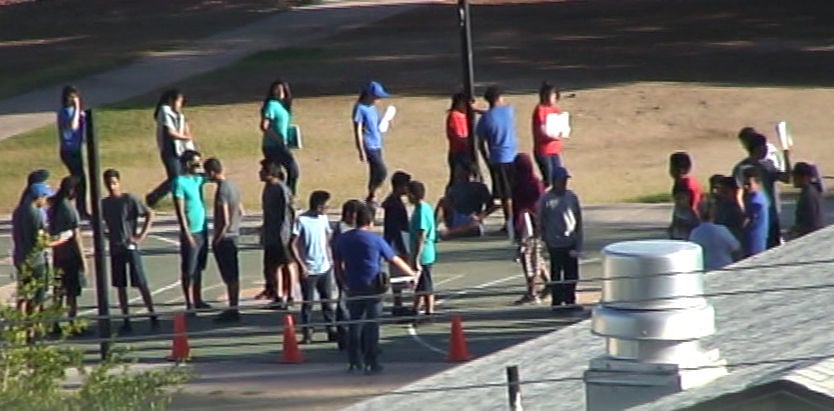The public is not allowed inside the shelters that house minors who come across the border without a parent or legal guardian. But here’s what life is generally like inside for the hundreds of mostly Guatemalan teens, based on interviews with current and former employees, a 2015 tour the Star was part of and media reports:
As they arrive at the converted off-campus college housing, minors are welcomed by two-wall size murals with children holding hands around a globe and inspirational words, including bravery and integrity, painted in Spanish.
The hallways to the medical clinic and intake area where they first arrive are lined with characters from “El Chavo del Ocho,” a popular Mexican sitcom.
The former ballroom and gym are classrooms with walls covered in maps and the children’s drawings of their home countries’ flags and national birds. What used to be a coffee shop is a training centers for staff.
Each dorm has bunk beds, a bathroom (with a door that doesn’t lock), drawers for their belongings.
At the cafeteria entrance is a big white board with a calendar listing different activities for the month, including movie night, religious services and council meetings — which one former worker said would only happen depending on the activities manager. On the board, the kids can write down requests to the staff — often for hair gel to look good at one of the regular dances — and feedback on the food.
The apartments have a large courtyard and a pool that has been covered up.
When the minors arrive they turn in their belongings, which are then placed inside a suitcase they get at the end. They are given clothes, usually two pairs of pants, shorts and shoes if needed.
They have to be supervised by staff at all time, with headcount required every 30 minutes.
At about 6 a.m., staff starts walking the hallways to wake up the minors, room by room. They shower, get ready and line up outside — even in the winter — until everyone in their floor is ready before they head to classrooms where they wait for their turn to have breakfast in 30-minute intervals.
Breakfast is followed by six hours of classes on subjects such as English, math, social studies and physical education until they break at 3:45 p.m. They then have free time where they can watch movies or play games, go to one of the clubs: bracelet-making, cooking, boxing or crochet.
At times, children from other Southwest Key-run facilities join them on some weekends to hold tournaments. They can also play basketball or volleyball.
Minors are not allowed to watch news or current events or to have a radio. They are allowed two calls a week but can only use phones provided by staff and workers said minors often complained about not getting their calls.
They sometimes also go on field trips to museums or parks, although workers said sometimes that’s difficult due to the number of kids at the shelter.
Occassionally, they also have a culture festival where they try to cook foods from their country.
While staff tries to keep them busy, there is also a lot of downtime when the minors don’t have much to do, especially on the weekends when six hours of their day are not occupied by school.
As it gets close to 8 p.m., they line up to head back to their room for the night, at times awoken by the mandatory 30-minute headcount that continue.





